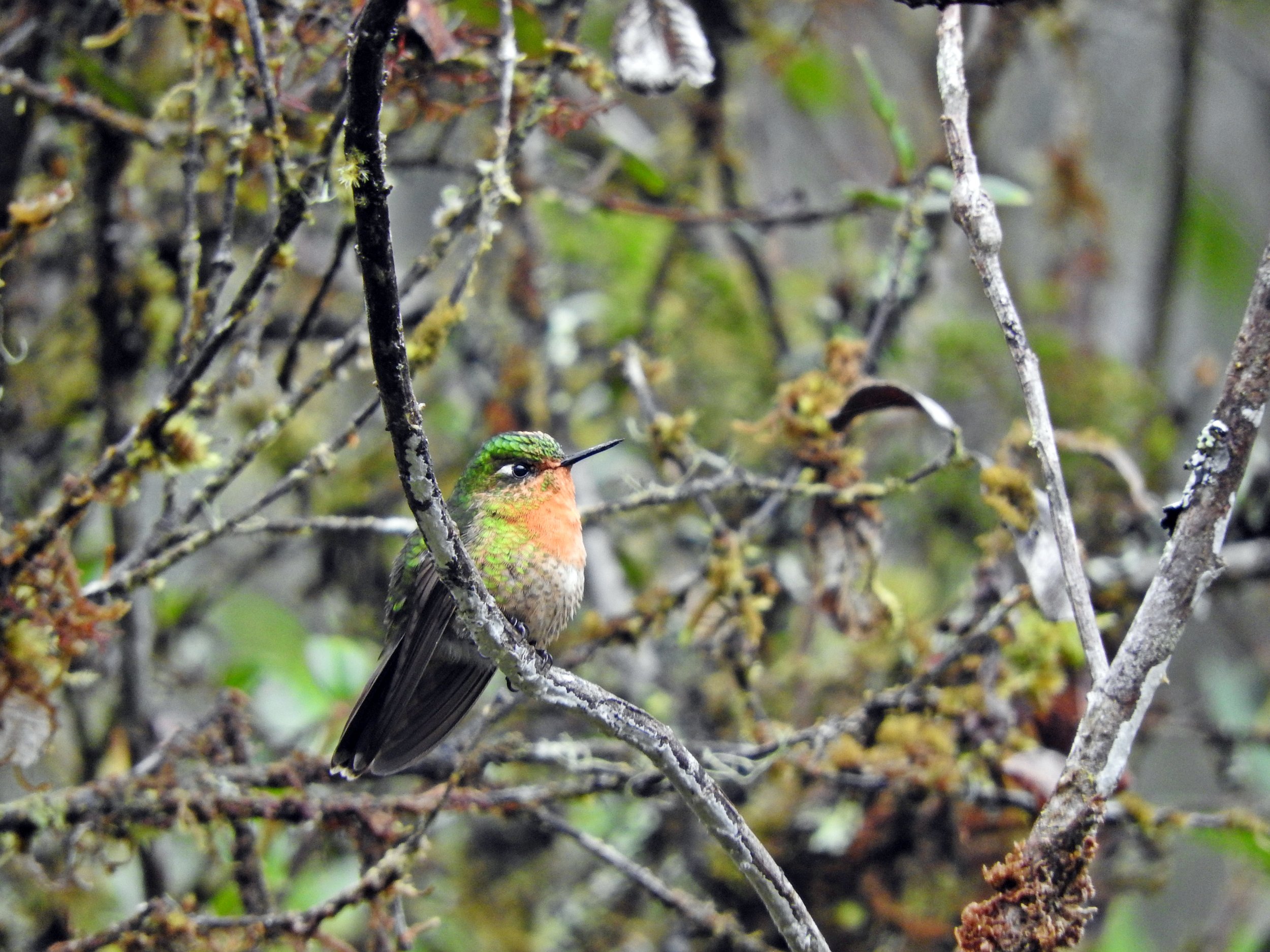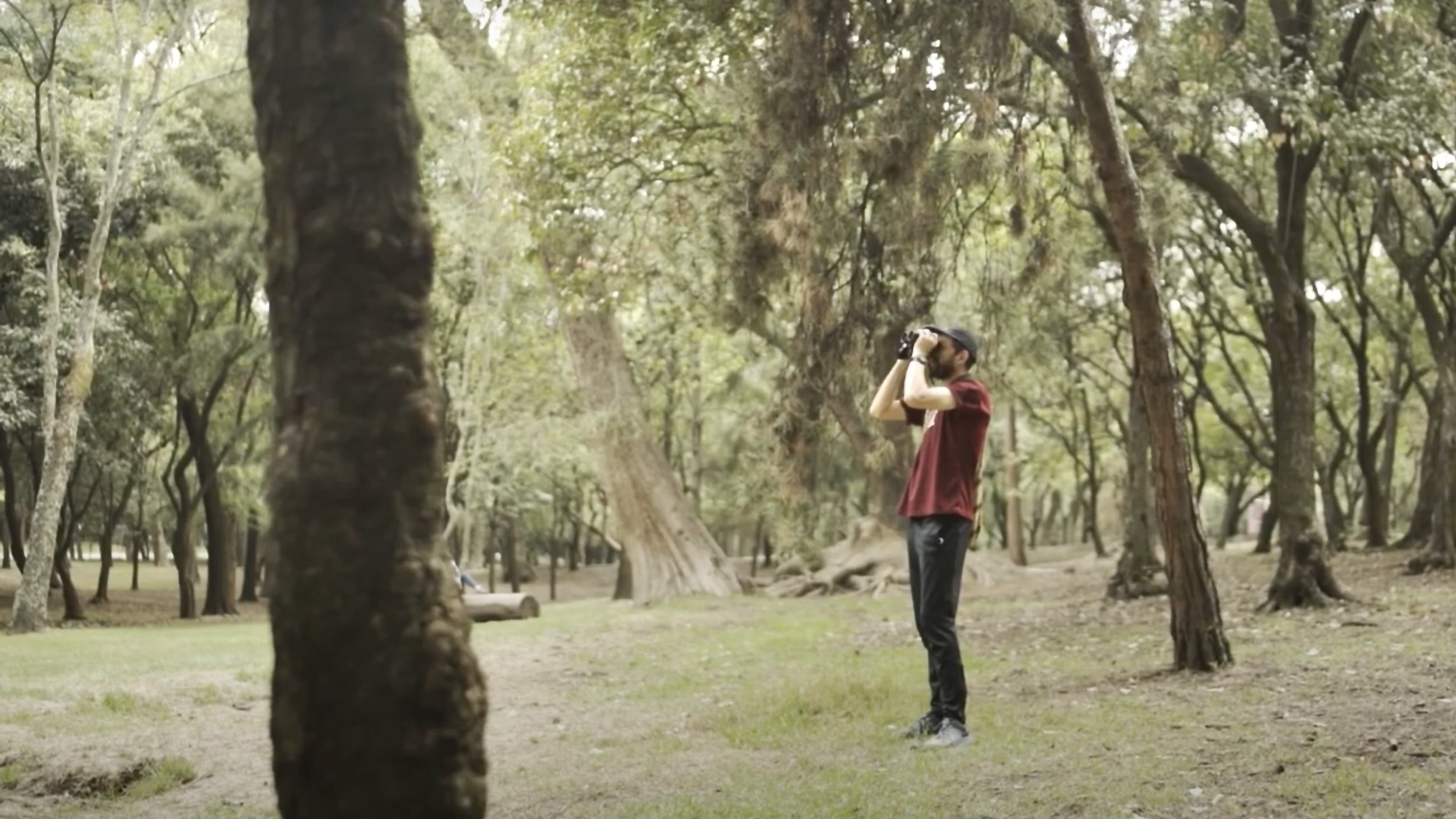Urban Birding in Bogotá: Monserrate
A new bird trail has made Bogota’s Monserrate Mountain an excellent new urban birding location in the heart of the Colombian capital. Find out more about how to visit the trail on our latest blog, and don’t miss our video of urban birding at Monserrate above.
Monserrate Mountain is undoubtedly one of Bogota's top tourist attractions. Towering above the city at over 3,000 masl, the view over the urban sprawl of the Colombian capital from the peak is incomparable. Thousands of tourists and locals journey to the top every week to admire the city below. Whether you're a city person or not, it's undeniable that the panorama from Monserrate is stunning. On clear mornings, you can spot the distant snowcapped peaks of the Central Andes.
Over the past few years, Monserrate has become a popular locale for urban birding in Bogota. Although the forests along the path leading up to the peak always had their fair share of birds to spot, the constant human traffic in the early morning hours made birding tricky. However, the recent opening of a dedicated private birding trail at the mountain's peak has turned it from "maybe we'll see a few birds" to "let's go birding at Monserrate this weekend."
Glowing Puffleg is relatively common at the feeders at Monserrate
The trail is known as the 'Sendero Paramuno' or Paramo Trail, named after the unique high-altitude ecosystem predominant to the Colombian Andes (or possibly the Shining Sunbeam hummingbird, which is found there and carries the local name Colibri paramuno). Despite the name, the habitat is primarily Andean forest, and most species found there aren't typical "páramo" birds. This little trail has a lot of good species to spot safely and easily in Bogota.
The trail is short and flat (just 360 m long) and is located behind a private gate between the cable car and funicular railway stations at the top of Monserrate. There are strict limits on visitors, so you must book in advance (you can do that on the Monserrate website here). However, the good news is that, despite the enormous crowds that flock to Monserrate on the weekends, the trail is always quiet, thanks to this visitor cap.
Since it forms part of arguably Bogota's biggest tourist attraction, the Paramo Trail isn't the cheapest birding in the world. Still, it's hardly daylight robbery at 59.000 COP (US$11.80) for foreigners and 26.500 COP (US$5.30) for Colombians for a three-hour visit. For an extra 10.000 COP, you can extend your stay for up to eight hours (but frankly, given the length of the trail, it's probably worth just doing three hours and then enjoying some time sightseeing in the Historical Centre of Bogota below the mountain). There are also special rates for Spanish- or English-speaking bird guides depending on your group size (for a complete list of tariffs, click here).
The real highlights of the trail are hummingbirds: a series of feeders and native flowers attract around ten regular species, including top targets like Sword-billed Hummingbird, Glowing and Coppery-bellied Pufflegs, Mountain Velvetbreast, Blue-throated Starfrontlet, Great Sapphirewing, and Green- and Black-tailed Trainbearers. For a period, the trail achieved local birding fame thanks to a stunning and unusual hummingbird that appeared to be a hybrid between Blue-throated and Golden-bellied Starfrontlet. Unfortunately, that particular bird hasn't been seen for a while now.
Tyrian Metaltail is another likely hummingbird species at Monserrate
A few corn feeders also bring in Andean Guan and Pale-naped and Gray-browed Brushfinches for close looks, while passing mixed flocks can contain several species of Andean tanagers, flycatchers, and flowerpiercers. Keep an eye out for one of Bogota's most iconic birds, the colorful Scarlet-bellied Mountain Tanager. Chestnut-naped Antpitta and Pale-bellied Tapaculo provide a constant soundtrack, but spotting either of these shy, elusive birds is tricky. Having said that, on my last visit, a surprisingly bold Chestnut-naped Antpitta just wandered into the open at the far end of the trail, so don't give up hope entirely!
The eBird hotspot for Monserrate reports 231 species from over 1,000 checklists. There are a good number of random, one-off records, and the number of species naturally increases during passage migration season. In general, an average list from a couple of hours of birding is between 20-30 species, not at all bad for some casual urban birding with the chaos of Bogota still audible in the background.
Andean Guan is a regular sight along the Paramuno Trail at Monserrate
If you're interested in birding at Monserrate, here are a few of our tips for your visit:
Your entrance fee can include return tickets on the cable car or funicular. While a hike up from Bogota to the peak is enjoyable, it's also pretty strenuous, and bear in mind the high altitude. If you are fresh off the plane, not in great shape, or have bad knees, take that ticket! Or you could ride the cable car up and slowly walk down.
When you book your tickets, you can choose a three-hour slot. While I would opt for the 6-9 am slot, you may only end up staying for part of the three hours; it's a short trail, and three hours is quite a long time unless you're staking out the hummingbird feeders for photos. It’s worth taking some time to explore the paths around the church and take in the city view as well.
Although the trail is 100% safe, be careful of your birding gear if you decide to have breakfast or lunch in the Candelaria historical district below Bogota. It's not especially dangerous per se, but it's never a good idea to flash expensive cameras and binoculars in city centers, so bring a bag for those.
Children under ten aren't allowed in (the website says as a 'precaution'; I honestly don't know what this is all about.)
Bring sunscreen and a jacket! Bogota's weather is famously changeable, and a day that starts off overcast and chilly can quickly switch to intense sun. And since the sun rises behind the mountains overlooking Bogota, the trail is shaded for the first hour or two of the day, meaning it can be pretty cold even on a sunny morning.
So if you find yourself in Bogota with a few hours to spare and a birding itch to scratch, you could do much worse than a spot of urban birding at Monserrate.





